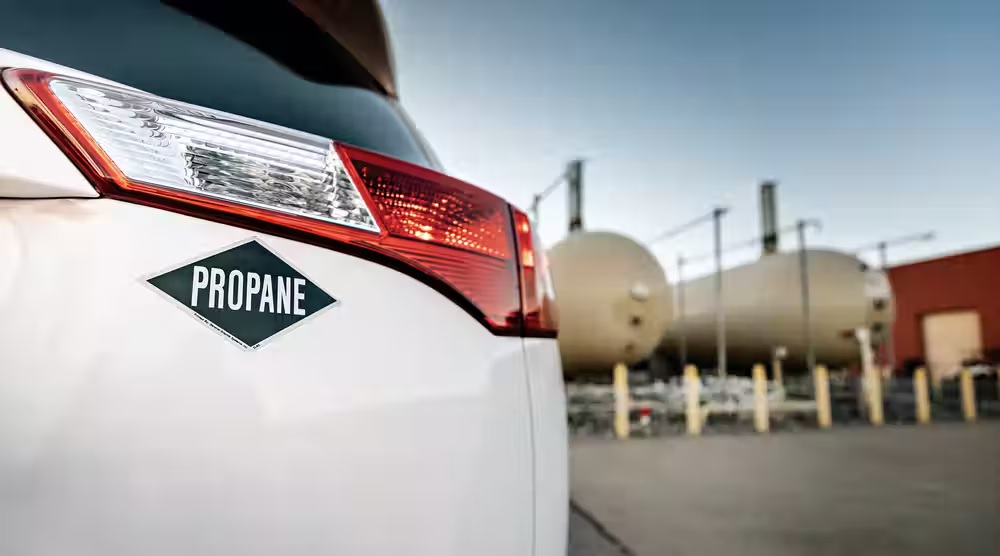Propane autogas is an affordable, flexible, and scalable fuel choice that can help cut emissions in your fleet—without sacrificing performance. The Propane Education and Research Council outlines the questions to consider when beginning the process.
Businesses, school districts, municipalities, and government agencies of all sizes have turned to propane autogas vehicles to cut emissions, lower total cost-of-ownership, and maintain reliable operations. Propane autogas—a clean-burning alternative fuel—has been used for decades to power light-duty, medium-duty, and heavy-duty vehicles. Fleet owners have found propane autogas to be a versatile and reliable solution for their clean energy goals—and for their bottom lines.
There are several things to consider when choosing the right fuel solution for your fleet, including vehicle offerings, conversion options, maintenance requirements, and refueling infrastructure. Here are some guidelines to determine how to get started:
1. Evaluate your operational duty cycle
As with any vehicle technology, start by identifying how long you typically keep a vehicle in your fleet, how many miles you run a day, and the weight class size of your vehicles. Compare that to propane autogas’ offerings, which are ideal for vehicles Class 3 to Class 7, and fleets that need a range of up to 400 miles per day. Fleet managers can expect to see new engine technology that meets or exceeds expectations for payload, range, and torque. These innovations emit ultra-low nitrogen oxides (NOx) and significantly reduce carbon dioxide (CO2) compared to today’s engines, producing virtually zero particulate matter—all using a simple three-way catalyst.
2. Work with your vehicle provider on tank sizing
Check with your vehicle dealer about sizing tanks for the range needed and ask for schematics on placement to insure proper body configuration fit. The fuel tank on a propane autogas-fueled vehicle is under slight pressure (about the same as the pneumatic tool lines in the maintenance shop) and the fuel tank footprint is approximately the same as gasoline or diesel. OEM vehicle ordering timeframes are determined by normal chassis build lead times and propane specification falls within this build time.
3. Review your infrastructure needs
Propane fueling infrastructure is completely scalable and is often changed out as the fleet size grows—without having to alter the dispensing equipment. Your local propane supplier can help identify the right refueling setup by considering the available space, expected growth, and traffic requirements. Fuel tank sizes range from 1,000 to 30,000 gallons. Propane autogas dispenses about 10 gallons/minute in the form of a liquid, much like gasoline and diesel. Most use a five-horsepower pump operating on 230v 30amp circuit. The same fuel management systems for gasoline and diesel are used with propane autogas dispensers.
What if you don’t have the space for refueling infrastructure?
Fleets with limited space or fleets needing more fueling locations along their routes can take advantage of public or private networks with no infrastructure investment. Network refueling stations are accessible 24/7 through a card lock system. Today, there are nearly 2,500 refueling stations across the United States offering propane autogas, according to the U.S. Department of Energy.
4. Work with your infrastructure supplier and your propane supplier on necessary permitting
The United States Environmental Protection Agency does not regulate propane tank storage because propane autogas does not contaminate the air, soil, or water. However, working with a propane supplier will help you navigate code requirements and final approvals needed by the local authorities that have jurisdiction. Permits vary by density of population and storage tank size: higher density and larger storage tanks will have longer lead times, which can be 3 weeks to 3 months on average. But to meet vehicle delivery schedules, equipment can be ordered during this time to keep everything on track.
5. Consider your maintenance and service needs
Fleet owners should also consider their maintenance needs, including training programs for service technicians. Maintenance facilities that are currently approved for working on gasoline or diesel do not need ventilation modifications to add propane vehicle maintenance to the facility. Be sure to confirm by checking with local authorities that have jurisdiction.
6. Work with your propane supplier for consistent fuel supply and pricing
Your local propane supplier can partner with you to develop a refueling schedule with backup remote monitoring for on-site storage levels so you can be confident that you’ll have autogas supply when you need it. In many cases, suppliers will also work with you to create a multi-year fuel contract to lock in a set price per gallon.
Once you’ve determined how propane autogas vehicles will meet your needs, your local propane supplier is a knowledgeable resource that can help you get started. As you evaluate a supplier, fleet owners should ask about the supplier’s experience in providing propane autogas for fleet vehicles and how they can assist on potential infrastructure installations. Once you choose a supplier, fleet owners should be prepared to discuss their current fleet’s needs, the amount of available space they have for refueling infrastructure, and the potential growth of the fleet. Propane suppliers will then provide recommendations for refueling infrastructure and if there are any leasing options available.
Propane autogas gives owners and managers the freedom to shape their fleets around their unique requirements. As propane autogas technology continues to improve, your fleet will be in prime position to enjoy further reductions in annual costs and improved environmental benefits. If your medium-duty fleet isn’t running on propane autogas yet, it’s easy to get started.
Source https://www.fleetowner.com/





